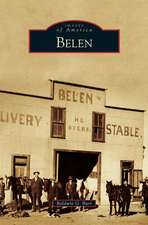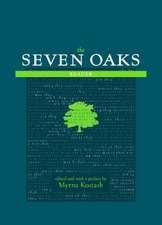Understanding and Teaching American Slavery: The Harvey Goldberg Series for Understanding and Teaching History
Editat de Bethany Jay, Cynthia Lynn Lyerly Cuvânt înainte de Ira Berlinen Limba Engleză Paperback – feb 2016
Perhaps no topic in U.S. history is as emotionally fraught as the nation’s centuries-long entanglement with slavery. How can teachers get students to understand the racist underpinnings of that institution—and to acknowledge its legacies in contemporary America? How can they overcome students’ shame, anger, guilt, or denial? How can they incorporate into the classroom important primary sources that may contain obsolete and racist terms, images, and ideas? This book, designed for college and high school teachers, is a critical resource for understanding and teaching this challenging topic in all its complexity.
Opening with Ira Berlin’s reflections on ten elements that are essential to include in any course on this topic, Understanding and Teaching American Slavery offers practical advice for teaching specific content, utilizing sources, and getting students to think critically. Contributors address, among other topics, slavery and the nation’s founders, the diverse experiences of the enslaved, slavery’s role in the Civil War, and the relationship between slavery and the northern economy. Other chapters offer ideas for teaching through slave narratives, runaway ads, spirituals, films, and material culture. Taken together, the essays in the volume help instructors tackle problems, discover opportunities, and guide students in grappling with the ugliest truths of America’s past.
Opening with Ira Berlin’s reflections on ten elements that are essential to include in any course on this topic, Understanding and Teaching American Slavery offers practical advice for teaching specific content, utilizing sources, and getting students to think critically. Contributors address, among other topics, slavery and the nation’s founders, the diverse experiences of the enslaved, slavery’s role in the Civil War, and the relationship between slavery and the northern economy. Other chapters offer ideas for teaching through slave narratives, runaway ads, spirituals, films, and material culture. Taken together, the essays in the volume help instructors tackle problems, discover opportunities, and guide students in grappling with the ugliest truths of America’s past.
Preț: 221.75 lei
Nou
Puncte Express: 333
Preț estimativ în valută:
42.45€ • 44.13$ • 35.20£
42.45€ • 44.13$ • 35.20£
Carte tipărită la comandă
Livrare economică 06-20 februarie 25
Preluare comenzi: 021 569.72.76
Specificații
ISBN-13: 9780299306649
ISBN-10: 029930664X
Pagini: 340
Ilustrații: 10 b-w illus.
Dimensiuni: 152 x 229 x 23 mm
Greutate: 0.45 kg
Ediția:1
Editura: University of Wisconsin Press
Colecția University of Wisconsin Press
Seria The Harvey Goldberg Series for Understanding and Teaching History
ISBN-10: 029930664X
Pagini: 340
Ilustrații: 10 b-w illus.
Dimensiuni: 152 x 229 x 23 mm
Greutate: 0.45 kg
Ediția:1
Editura: University of Wisconsin Press
Colecția University of Wisconsin Press
Seria The Harvey Goldberg Series for Understanding and Teaching History
Recenzii
“Many instructors find the subject of slavery intimidating. This volume provides them with the necessary background content, as well as effective and interesting sources and methods, for engaging students and steering them away from common misperceptions.”—Roy E. Finkenbine, author of Sources of the African-American Past
“A substantial contribution. Appropriate for instructors at both the college and secondary school levels, this book provides ample background information and practical classroom activities along with advice on pedagogy.”—Nicholas J. Aieta, recipient of the American Historical Association's Eugene Asher Distinguished Teaching Award
“Every teacher should read this book and be reinvigorated in the task of presenting history accurately and thoroughly. Every citizen should read this book and be rededicated to the ideals of this society—equality and fairness.”—Foreword Reviews
“A book that has the potential to change the way that slavery is taught in American schools. It takes a comprehensive look at slavery across American history, offering dozens of concrete suggestions for teaching strategies and learning objects that could be used in all K-12 social studies classrooms.”—Education Week
“Profoundly useful. . . . Although the variety and ingenuity of teaching methods presented here are exceptional, the contributors are even more effective at calling out the difficult realities educators have with teaching slavery—such as discussing the sensitive issue of race; identifying slavery as a national, not just a Southern, institution; and reconciling its cruelty with the growth of American politics and economics. . . . Accessible and relevant to any classroom at any level.”—Choice
Notă biografică
Bethany Jay is an associate professor of history at Salem State University. Cynthia Lynn Lyerly is an associate professor of history at Boston College.
Cuprins
Foreword
Teaching Slavery: The Short Course for Bringing Slavery into the Classroom in Ten Not So Easy Pieces
Ira Berlin
Introduction
Bethany Jay and Cynthia Lyerly
Section One: Slavery and the Classroom
Methods for Teaching Slavery to High School Students and College Undergraduates in the United States
James W. Loewen
Dealing With Things as They Are: Creating a Classroom Environment for Teaching Slavery and Its Lingering Impact
Steven Thurston Oliver
Section Two: Teaching Specific Content
Teaching the Origins of Slavery in the Americas
Eric Kimball
Slavery in the New Nation: Human Bondage in the Land of Liberty
Paul Finkelman
Blood Stained Mirrors: Decoding the American Slave Trading Past
Sowande’ Mustakeem
Slavery and the Northern Economy
Christy Clark-Pujara
Northern Slavery and Its Legacies: Still a New (and Unwelcome?) Story
Joanne Pope Melish
Slave Resistance
Kenneth S. Greenberg
Slave Culture
Bernard E. Powers, Jr
The Diverse Experiences of the Enslaved
Deirdre Cooper Owens
Slavery and the Civil War
Bethany Jay
Comparative Slavery
Laird W. Bergad
The Challenge of Slavery Since Emancipation: From 1865 to the 21st Century
James Brewer Stewart
Section Three: Sources and Strategies for Teaching Slavery
Using the WPA Narratives in the Classroom
Cynthia Lyerly
Teaching the History of Slavery through Film
Ron Briley
Art and Slavery
Ray Williams
In the Footsteps of Others: Understanding Slavery Through Process Drama
Lindsay Anne Randall
‘A Likely Negro:’ Using Runaway Slave Ads to Teach Slavery
Antonio T. Bly
Teaching the History of Slavery and its Legacy through Historical Archaeology: Project Archaeology Investigating Shelter
Sarah E. Miller, James M. Davidson, and Emily Palmer
Contributors
Index
Teaching Slavery: The Short Course for Bringing Slavery into the Classroom in Ten Not So Easy Pieces
Ira Berlin
Introduction
Bethany Jay and Cynthia Lyerly
Section One: Slavery and the Classroom
Methods for Teaching Slavery to High School Students and College Undergraduates in the United States
James W. Loewen
Dealing With Things as They Are: Creating a Classroom Environment for Teaching Slavery and Its Lingering Impact
Steven Thurston Oliver
Section Two: Teaching Specific Content
Teaching the Origins of Slavery in the Americas
Eric Kimball
Slavery in the New Nation: Human Bondage in the Land of Liberty
Paul Finkelman
Blood Stained Mirrors: Decoding the American Slave Trading Past
Sowande’ Mustakeem
Slavery and the Northern Economy
Christy Clark-Pujara
Northern Slavery and Its Legacies: Still a New (and Unwelcome?) Story
Joanne Pope Melish
Slave Resistance
Kenneth S. Greenberg
Slave Culture
Bernard E. Powers, Jr
The Diverse Experiences of the Enslaved
Deirdre Cooper Owens
Slavery and the Civil War
Bethany Jay
Comparative Slavery
Laird W. Bergad
The Challenge of Slavery Since Emancipation: From 1865 to the 21st Century
James Brewer Stewart
Section Three: Sources and Strategies for Teaching Slavery
Using the WPA Narratives in the Classroom
Cynthia Lyerly
Teaching the History of Slavery through Film
Ron Briley
Art and Slavery
Ray Williams
In the Footsteps of Others: Understanding Slavery Through Process Drama
Lindsay Anne Randall
‘A Likely Negro:’ Using Runaway Slave Ads to Teach Slavery
Antonio T. Bly
Teaching the History of Slavery and its Legacy through Historical Archaeology: Project Archaeology Investigating Shelter
Sarah E. Miller, James M. Davidson, and Emily Palmer
Contributors
Index
Descriere
No topic in U.S. history is as emotionally fraught, or as widely taught, as the nation’s centuries-long entanglement with slavery. This volume offers advice to college and high school instructors to help their students grapple with this challenging history and its legacies.




















